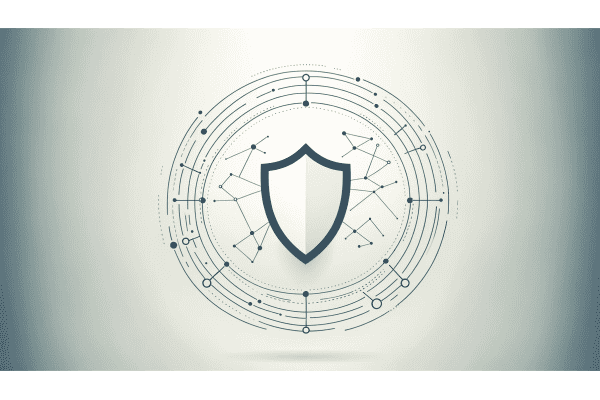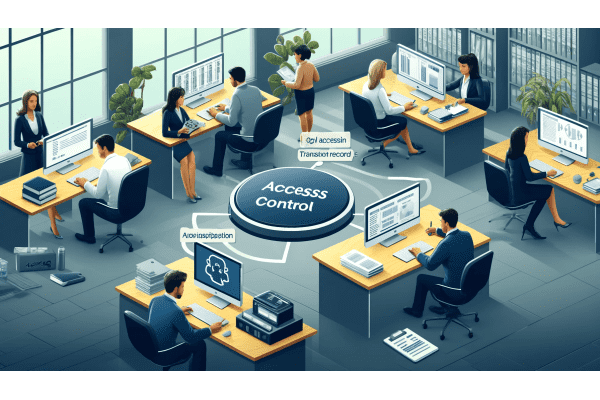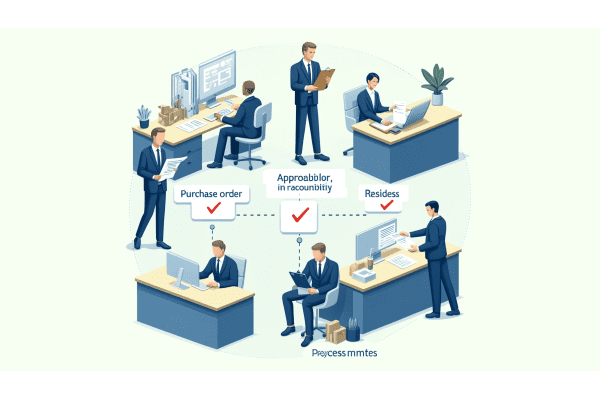Introduction
In today’s digital landscape, ensuring your organization is protected against cyber threats is paramount. Cybersecurity architecture plays a crucial role in safeguarding sensitive data and systems from malicious actors. This blog post will delve into the five essential cybersecurity principles that form the foundation of a secure organization. These principles are fundamental to building a robust cybersecurity architecture capable of defending against a wide range of cyber threats.
1. Defense in Depth
The principle of defense in depth is akin to creating an obstacle course for cyber attackers. Just like the layers of security in an ancient castle, modern cybersecurity requires multiple layers of defense mechanisms to protect valuable assets. By implementing a diverse set of security measures across different levels of the IT infrastructure, organizations can mitigate risks and prevent single points of failure.
Transition to Modern Security
Consider a contemporary example where a user accesses various servers within a network. Applying defense in depth, organizations can incorporate measures such as multi-factor authentication, endpoint protection, network firewalls, vulnerability testing, encryption, and access controls. This layered approach ensures that even if one security mechanism fails, others remain intact to safeguard the system.
Scenario 1: Financial Institution Security Measures
Imagine an organization that hosts sensitive client data on its servers. It implements multi-factor authentication for all users, ensuring that even if a password is compromised, the attacker would still need a second form of verification. The network is protected by firewalls and intrusion detection systems that monitor for suspicious activity. Endpoints, such as employee laptops, are equipped with antivirus software and encrypted storage to prevent data breaches. Regular vulnerability testing helps identify and address potential weaknesses before they can be exploited.
Implementation Strategies
Defense in depth involves a combination of physical, technical, and administrative controls. Physical controls might include secure facility access and surveillance, while technical controls encompass firewalls, intrusion detection systems, and anti-malware software. Administrative controls involve policies and procedures such as regular security training and incident response plans. By integrating these controls, organizations can create a comprehensive security posture that addresses threats from multiple angles.
Scenario 2: Comprehensive Security Strategy
A company implements defense in depth by combining physical security measures like biometric access controls at data centers, technical measures such as network segmentation and encryption, and administrative measures including mandatory cybersecurity training for employees and a detailed incident response plan. This multi-layered approach ensures that even if one layer is breached, other layers provide continued protection.
2. Principle of Least Privilege
The principle of least privilege advocates for granting users only the access rights they need to perform their job functions. Access rights should be authorized based on a legitimate business requirement and continuously reviewed to prevent privilege creep. By limiting user permissions to the essentials, organizations can reduce the attack surface and enhance overall system security.
Hardening Systems
Implementing the principle of least privilege involves hardening systems by removing unnecessary services, changing default configurations, and eliminating privilege creep. Regular recertification of user access rights ensures that permissions are justified and aligned with current job roles, thereby strengthening the organization’s security posture.
Scenario 3: Financial Access Control
A financial institution assigns access rights based on job roles, ensuring that tellers can only access customer transaction records, while loan officers have access to credit application data. Unused services on company systems are disabled, and default passwords are changed to prevent unauthorized access. Periodic audits are conducted to review and adjust user permissions, ensuring that employees have only the access necessary for their current roles.
Practical Applications
In practice, the principle of least privilege can be enforced through role-based access control (RBAC), where permissions are assigned based on job roles rather than individuals. This simplifies the management of access rights and ensures that users only have access to the information necessary for their duties. Additionally, auditing and monitoring tools can be used to track access patterns and detect any anomalies that might indicate misuse or unauthorized access.
Scenario 4: Role-Based Access Control in Software Development
A software development company uses RBAC to assign access rights to its employees. Developers have access to source code repositories, while the QA team can access testing environments but not production systems. Monitoring tools track access logs and flag any unusual access patterns, such as attempts to access restricted areas, allowing the security team to investigate potential security incidents.
3. Separation of Duties
The notion of separation of duties aims to distribute tasks and responsibilities among multiple individuals to prevent collusion and unauthorized access. By enforcing a system where no single person has complete control over critical functions, organizations can enhance accountability and reduce the risk of internal threats.
Collaborative Security
In practice, separation of duties ensures that different individuals handle request initiation, approval, and execution, thereby creating a checks-and-balances system that deters fraudulent activities and unauthorized actions.
Scenario 5: Procurement Process in Action
In a procurement process, one employee is responsible for creating purchase orders, another approves them, and a third handles payment processing. This separation ensures that no single individual can both initiate and approve a transaction, reducing the risk of fraud or embezzlement.
Real-World Examples
A common example of separation of duties is in financial systems, where one person might handle the creation of purchase orders, another approves them, and a third processes the payments. This division of responsibilities makes it more difficult for any single individual to commit fraud without detection. Similarly, in IT environments, one team might develop software, another tests it, and a third deploys it, ensuring that no single team has unchecked control over the entire process.
Scenario 6: Software Development Lifecycle
An IT company separates duties by assigning different teams for software development, testing, and deployment. The development team writes code, the QA team conducts testing and identifies bugs, and the operations team manages the deployment of the final product. This division ensures that code is thoroughly tested and reviewed before it goes live, reducing the risk of introducing vulnerabilities.
4. Secure by Design
Security should be an integral part of the design and development process, rather than an afterthought. By incorporating security considerations from the initial stages of a project, organizations can proactively address vulnerabilities and build resilient systems that withstand potential threats.
Holistic Security Approach
Secure design involves integrating security principles throughout the software development lifecycle, including secure coding practices, rigorous testing, and continuous monitoring. By embedding security into every phase of the project, organizations can create a culture of security awareness and proactive risk management.
Scenario 7: Startup Security Integration
A tech startup developing a new web application integrates security from the outset by using secure coding practices, such as input validation and secure session management. Security testing is conducted during each development sprint, and automated tools are used to scan for vulnerabilities continuously. This proactive approach ensures that security is a core component of the development process, rather than an afterthought.
Implementation Tactics
To achieve secure by design, organizations can adopt methodologies such as DevSecOps, which integrates security practices into the DevOps process. This involves automating security testing, conducting regular code reviews, and using tools that scan for vulnerabilities early in the development cycle. By fostering collaboration between development, security, and operations teams, organizations can ensure that security is a shared responsibility.
Scenario 8: DevSecOps Implementation
A company adopts DevSecOps by incorporating automated security testing tools into their CI/CD pipeline. Every time code is committed, it undergoes security checks to identify potential vulnerabilities. Security experts collaborate with developers to review code and provide feedback on best practices. This integration ensures that security is continuously addressed throughout the development process.
5. KISS Principle (Keep It Simple, Stupid)
The KISS principle advocates for simplicity in security solutions to avoid unnecessary complexity that could lead to vulnerabilities. By keeping security measures straightforward and user-friendly, organizations can enhance usability while maintaining robust protection against cyber threats.
Balancing Complexity and Security
Complexity in security measures can sometimes backfire, leading to user frustration and increased risk of human error. By adhering to the KISS principle, organizations can strike a balance between security and usability, ensuring that security solutions are effective yet easy to implement and maintain.
Scenario 9: Password Policy Simplification
A company simplifies its password policy by requiring strong, unique passwords but implementing a password manager to help employees manage their credentials. This approach reduces the likelihood of weak passwords while making it easier for employees to comply with security requirements.
Practical Application
Implementing the KISS principle can involve using straightforward user authentication methods, clear and concise security policies, and intuitive security tools that do not overwhelm users with complexity. For example, using single sign-on (SSO) can simplify the login process while maintaining strong security. Additionally, security policies should be written in plain language, making them easy to understand and follow.
Scenario 10: Single Sign-On (SSO) for Ease of Access
An organization adopts single sign-on (SSO) for its various applications, allowing employees to use one set of credentials to access multiple services. This reduces the complexity of managing multiple passwords and enhances security by centralizing authentication. Security policies are written in plain language and are easily accessible to all employees, ensuring that everyone understands their responsibilities.
Conclusion
In conclusion, implementing these five cybersecurity principles—defense in depth, least privilege, separation of duties, secure by design, and the KISS principle—is essential for creating a secure organizational environment. By adopting a comprehensive approach to cybersecurity architecture and adhering to these fundamental principles, organizations can fortify their defenses against evolving cyber threats and safeguard their critical assets.







